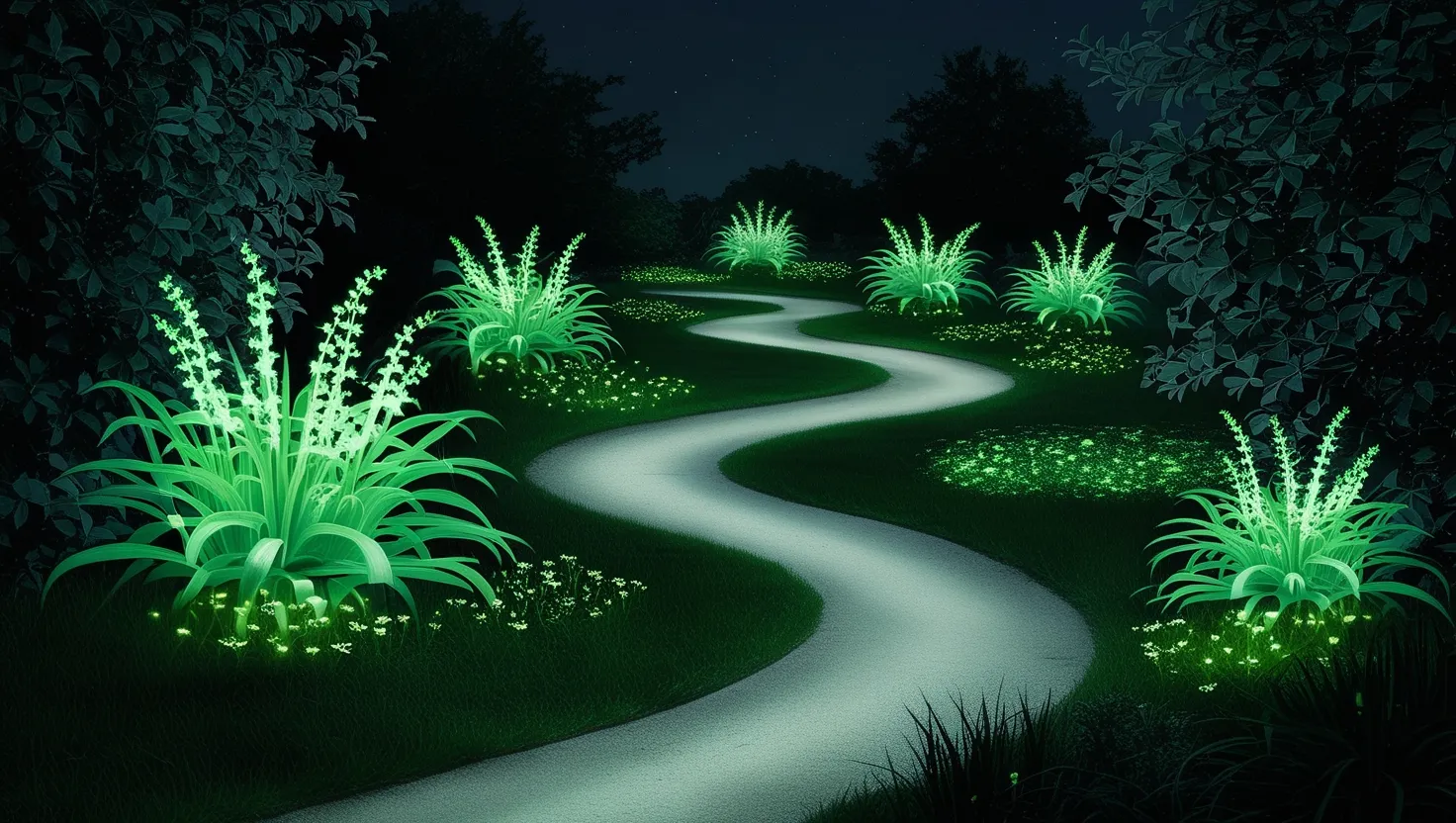Imagine walking through a garden or a city park at night, surrounded by plants that glow softly in the dark. This isn’t a scene from a science fiction movie, but a reality that is rapidly taking shape thanks to advancements in genetic engineering and synthetic biology. The field of bioluminescent agriculture is emerging, promising to revolutionize the way we think about lighting and sustainability.
At the heart of this innovation is the ability to genetically engineer plants to produce their own light. This concept, though fascinating, is not entirely new. In 1986, scientists at UC San Diego created the first glowing plant by inserting genes from fireflies into tobacco plants. However, the recent breakthroughs have made this technology more viable and accessible.
One of the key players in this field is Light Bio, a synthetic biology startup that has developed bioluminescent petunias known as Firefly™ Petunias. These plants are engineered with genes from bioluminescent mushrooms, which have been optimized to enhance the plants’ ability to glow. The result is a soft green glow that is visible to the naked eye and can last throughout the plant’s life cycle without any external aid.
The process of creating these glowing plants involves intricate genetic modifications. Scientists have discovered that by using the DNA of bioluminescent fungi, they can tap into the metabolic pathways of plants to produce a continuous glow. For instance, the caffeic acid cycle, a metabolic pathway found in fungi, can be engineered into plants to produce luciferin, the compound responsible for the glow. This approach is more efficient than previous methods that relied on bacterial bioluminescence genes, which were cumbersome and produced insufficient light.
The implications of this technology are far-reaching. For one, it offers a sustainable alternative to traditional lighting methods. Imagine urban spaces illuminated not by electric streetlights, but by glowing trees and plants. This could significantly reduce energy consumption and light pollution, creating more environmentally friendly cities.
In addition to urban planning, bioluminescent plants could transform interior design. Homeowners and businesses could use these plants to create unique and energy-efficient lighting solutions. The aesthetic appeal of glowing plants is undeniable, and they could become a staple in modern decor, adding a touch of natural magic to any space.
But the potential applications go beyond aesthetics and sustainability. Bioluminescent plants could also serve as indicators of plant health and environmental conditions. For example, when these plants are exposed to certain chemicals or stressors, their glow can change intensity or pattern, providing valuable insights into their metabolic processes. This could be particularly useful in agricultural research, helping scientists understand how plants respond to different environmental conditions.
Moreover, this technology has the potential to extend beyond Earth. In the context of space colonization, bioluminescent plants could provide a natural and self-sustaining lighting solution for future space habitats. Imagine a Martian garden where the plants not only produce oxygen but also light, creating a more habitable environment for humans.
The scientific community is also excited about the broader implications of this research. By studying how these plants produce light, scientists can gain deeper insights into plant metabolism and molecular physiology. This knowledge could lead to meaningful advancements in areas such as food security and nutrition, as it helps us understand how plants respond to their environment and how we can optimize their growth.
Light Bio, in collaboration with Ginkgo Bioworks, is continually optimizing the genetics of these bioluminescent plants to make them even brighter. Their goal is to create future plants that are at least 10 times brighter than the current versions. This collaboration highlights the power of synthetic biology in driving innovation and pushing the boundaries of what is possible.
Another approach to creating glowing plants involves nanobionics, a field pioneered by researchers at MIT. By embedding nanoparticles into plant leaves, these scientists have induced plants to give off light for several hours. This method uses luciferase, the enzyme that gives fireflies their glow, and luciferin, which is carried into the plant cells by nanoparticles. While this technology is still in its early stages, it shows promise for transforming any type of plant into a light source, potentially even large trees.
The journey to making bioluminescent plants a reality has been decades in the making. From the initial experiments with firefly genes to the current advancements with fungal DNA, each step has brought us closer to a future where plants can light our way. As Keith Wood, CEO of Light Bio, noted, this technology has the power to inspire a passion for nature and technology, bringing us closer to a solarpunk dream of living in harmony with nature.
As we look to the future, it’s clear that bioluminescent agriculture is more than just a novelty; it’s a beacon of innovation that could illuminate our path towards a more sustainable and technologically advanced world. Whether it’s in our homes, our cities, or even in space, these glowing plants are set to revolutionize the way we think about lighting and our relationship with the natural world.
In the coming years, we can expect to see more varieties of glowing plants, each with its own unique characteristics and applications. From periwinkles to roses, the palette of bioluminescent flora is expanding, offering endless possibilities for both practical use and aesthetic enjoyment.
As consumers, we will soon have the opportunity to experience this technology firsthand. Light Bio is already accepting preorders for their Firefly Petunias, which will be shipped out starting in April 2024. For just $29, anyone can bring a piece of this innovative technology into their home or garden.
The excitement around bioluminescent plants is palpable, and it’s not hard to see why. These plants invite us to experience biotechnology in a way that is both magical and accessible. As Drew Endy, an associate professor of bioengineering at Stanford University, put it, they allow people to engage with biotechnology from a position of wonder.
In conclusion, the emergence of bioluminescent agriculture marks a significant milestone in the intersection of biotechnology and sustainability. As we continue to explore and develop this technology, we are not just creating glowing plants; we are paving the way for a future where nature and technology blend seamlessly, illuminating our world in ways we never thought possible.






